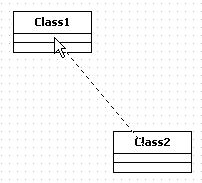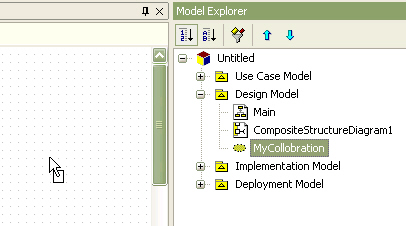
If you drag Man to the lower level of Animal, it will be represented as its internal class. Note that the inheritance relationship cannot be set in the Model Explorer. Then drag these packages and classes to the Main chart on the left working area, and set the class inheritance relationship. Use Model Explorer to add a package (Namespace), class and its attribute settings, class member methods and parameters are also operated by right-clicking the pop-up menu. Open your StarUML and create a new project. That is, A will be created with the creation of B, and will die with the demise of B.ĭependency This relationship shows that if class A is modified, class B will be affected. The relationship represented by the combination is also has-a, but here, the lifetime of A is controlled by B. For example, eyes (Eye), nose (Nose), mouth (Mouth), ear (Ear) are part of the head (Head), so the class Head should be composed of the classes Eye, Nose, Mouth, and Ear, not derived (inherited) ) Becomes.Ĭomposition (composition) It represents a stronger aggregation relationship-composition (composition). Instead, B must be combined with A and other things. Logically, the base class Animal is the foundation or origin of the subclass, and all the functions and attributes of the base class are meaningful to the subclass, which is also expressed as B is a kind of A (a kind of).Īggregation logically means that A is a part of B, and B is not allowed to derive from A. For example, Animal is the base class, and Man, Bird, and Dog are subclasses. In UML terminology, this relationship is called Generalization. Generalization (Generalization) uses hollow triangles to indicate inheritance (class inheritance). In addition, clearly labeled dependencies can clarify the relationships between each element.There are several important concepts in design patterns: Generalization (Generalization) Aggregation (Aggregation) Composition (Composition) Dependency (Dependency) The use of packages can provide users with a high-level view of a model with unambiguous named references for each of the elements it contains. Even simple models can be difficult to understand without some type of visual organization. Package diagrams can also be used in conjunction with model diagrams-a type of UML auxiliary structure diagram used to depict the logical, behavioral, or structural aspects of a system. By fuzing the package diagram structure with other UML diagrams, you can simplify any model type, making it easier to understand. Packages can also be used within other UML model types to organize and arrange elements such as classes, data entities, and use cases. Class diagrams: Classes are organized into into packages.Use-case diagrams: Each use-case is depicted as an individual package.Package diagrams are most commonly found used in:

Essentially, the content of two packages are combined to produce a new package.Īs we’ve shown earlier in this guide, packages are UML constructs that can be used to organize the elements within any UML classifier in a variety of UML diagrams. Package merge: A directed relationship in which the contents of one package are extended by the contents of another.This type of directed relationship adds the names of the members of the imported package to its own namespace Package import: A directed relationship between and importing namespace and an imported package.This is used to import select individual elements without resorting to a package import and without making it public within the namespace. Element import: A directed relationship between an importing namespace and an imported packageable element.Dependencies are divided into two groups: access and import dependencies. Dependencies: A visual representation of how one element (or set of elements) depends on or influences another.

Packageable elements can also be rendered as a rectangle within a package, labeled with the appropriate name. These can include events, components, use cases, and packages themselves.


 0 kommentar(er)
0 kommentar(er)
